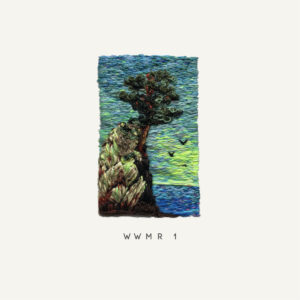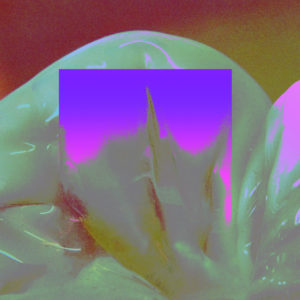#10 Wai Wai Music Resort WWMR 1
If total number of plays need to be considered for any favorites list, Wai Wai Music Resort ran away with my 2019. Whether because I needed to concentrate on work or simply wanted a stereophonic sound trip bound for endless summer, WWMR 1 delivered pure breeze. It’s also the surprise crown jewel of Local Visions’ previous 12 months, as no release under their umbrella better captured the ethos of what they are about like this one. City pop has become the big bright neon core of how many people (at least online) see older Japanese music, and while plenty of great stuff has received newfound attention, it results in a distortion about just how varied this corner of Japanese pop could be. Wai Wai expand the memory pool to include resort BGM, easy-going tropical lounge and the type of music you’d find on those JAL records that are like “the sound of the Grand Canyon” clogging up Hard Offs. Of course, it isn’t quite that — it’s their own read on the type of forgotten albums you have to buy guidebooks to learn about, given a specific setting thanks to samples of airplane intercom chat and a pace made for vacation. And that’s all an illusion today, something Wai Wai wink at with standout “For Lonely Drivers (F.L.D.),” a fake radio transmission promising warmer climes to solitary highway travelers (and maybe for music critics…”tropical synths,” adjective lovers rejoice). If we are always doomed to misremember the past, Local Visions exists to at least offer new interpretations on these misconceptions, while reminding of the escapist power it holds. Get it here, or listen below.
#9 FNCY FNCY

Blah blah the ’80s blah blah blah economic bubble blah blah help me forget about Trump. I’ve done my fair share of thinkpiece-ish reflection on Japanese artists digging into yesteryear for their sound at a time when that stuff is celebrated/fetishized abroad, but this pseudo-academic farting around would be totally unfair to FNCY. These songs are just a blast, and would be at any point in time. whether the sounds used to construct them were on trend or not. The three artists involved in this semi-supergroup have done pretty well together in the past (and uhhh not so hot)…but never anything like this, where the trio pull air-light bounce out of “FNCY Clothes” and flip chilly sparseness into something luxurious on “silky.” Chinza Dopeness has never sounded more in it than he does across FNCY, while Zen-La-Rock’s Wolfman New Jack voice is always something to behold — sources say he sounds like that when just talking too, which is like you found out Jim Davis actually owns a cat named Garfield.
But this is a victory lap for G.Rina above all else, a creator diving into city pop and other bubble-era sounds since the Aughts, and turning relics into crystal for more than a decade now. Few of these artists — the people who kept plugging away at these sounds after their heyday ended and everyone moved onto, what, Shibuya-kei and Eurobeat — have yet to enjoy any recognition despite continue to explore once-abandoned sounds. Yet all of the top-tier tunes here heavily involve G.Rina both vocally and as producer. Just check the glistening skip of “Aoi Yoru” or the smoother skip of “Konya Wa Medicine,” all of which hit on exactly made all this ’80s pop stick around in so many people’s heads long after its popularity faded. Alongside the two rappers, she found the perfect vessel to really make this sound shine. Listen below.
#8 Tohji angel
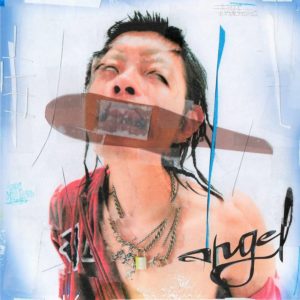
May 5, 2019: Nothing makes you feel all 31 years old like squeezing between two shirtless dudes covered in face tats and colored, mulleted hair. The Tokio Shaman event at Shibuya WWW, though, is all about youth, from the fans cramming up every inch of space to the rappers taking the stage to perform over emo-spiked beats while sporting Marilyn Manson t-shirts and, in one artist’s case, something closer to a medieval coat of arms. I’m painfully out of place, but thrilled all the same seeing a community blossom right in front of my eyes in a way I’ve only seen with things like Maltine, INNIT and CUZ ME PAIN. People in or just out of high school are moshing along and shouting right back at every performer, though nobody gets them as geeked up like Tohji. He’s the penultimate rapper, and the whole time the crowd bobs along when they aren’t thrashing, phones held up to record every second he’s visible. There’s a whole universe of inked-up kids here, but he’s the brightest star by far.
August 9, 2019: A Starbucks in Kichijoji isn’t the best place to ponder about the state of Japanese hip-hop, nor is it the ideal setting to listen to a kid jab at your ears with lines like “I’ve got knife so I’ll stab you.” For a long time, I avoided Japanese rap owing to the language barrier, and gave it the benefit of the doubt as a result. As my comprehension improved, so did my willingness to give it a go…and the results were not good. So much Japanese rap desperately wants to mimic every detail of the American artists who created the genre, resulting in derivative works that urge you to just listen to Migos. With few exceptions, all that vocab flashcarding failed to reveal new depth to Bad Hop or whatever, but rather only made them seem cornier. Plenty of artists here used rap as a delivery mechanism and found interesting angles on the genre, but they often were grouped more closely with J-pop than hip-hop.
Tohji offers the welcome shift, the first true great hope with this genre in Japan in the 21st century. He’s still indebted to American artists — wherever in the world you go, they invented rap and that’s a fact that can’t be ignored — but he’s not worried about sounding like them. He sounds like Tohji, all nervy energy and Godzilla screams and “I’ve got knife so I’ll stab you.” Lyrics here are both goofy nonsense designed for those WWW circle pits (“Snowboarding,” “Rodeo”) and emotional spelunking (“mamasaidloveme,” “on my own way”). Posturing is no fun, but Tohji and friends embrace wilding out together over having to try to impress American label reps or 88Rising or whoever might encounter them. angel is Tohji’s first big summary of self, part rave up and part mutation on the whole U.S. SoundCloud rap movement. It’s all his, and hearing it for the first time feels like seeing a whole new vista emerge for Japanese rap.
January 15, 2020: Months later, angel still marks the biggest development in Japanese rap since that first Yurufuwa Gang album. People are starting to notice…Tohji has one more appearance on this list, while No Jumper of all places debuted the “Rodeo” video at the very end of 2019. What comes next…who knows, but anything seems possible at the moment. As long as Tohji holds true to what made his first mixtape such a thrill and what gets all those kids bouncing along in whatever livehouse he plays, he’ll be OK. Listen below.
#7 Koutei Camera Girl Drei Dawn By Flow + Be There EP
Idol music isn’t designed to last. Save for the self-contained pop entities that “graduate” (read: shed) old members and replace them with new ones to keep the brand humming along, this corner of J-pop thrives on the ephemeral. Groups come, groups have a brief moment, groups end. After 2019, add Koutei Camera Girl Drei to the pile of finished idol-pop projects, with one of the weirder legacies to sort out. They aren’t like Especia — which while always under mainstream radar did carve out an online niche — nor are they like the dozens of “underground idols” occupying weekday slots at livehouses across Tokyo. The group played internationally multiple times, but have next to no impact on J-pop, idol or even indie communities. Their core sound — their schtick, in idol terms — was a mix of rap, electronic and, at the very end, dancehall. Their songs were frequently great, with last year’s stunning New Way Of Lovin’ elegantly fusing rave, acid, house and other corners of dance music into the world of idols (woo-woo cheers intact). Dawn By Flow and the Be There EP built on that…and then proved to be the bookend to their existence.
What a double punch to go out on with, though. Dawn By Flow features one of the riskiest sonic developments they could have taken — they embrace dancehall, with one member of the trio frequently swerving into a vocal delivery going heavy on how MCs in that genre sound. It’s a landmine in waiting for like a dozen reasons (though hearing Chet Hanks recently reminds, oh Koutei Camera Girl Drei is probably fine) but they manage it, adding a dash of a genre rarely (ever?) seen in idol music to come through in songs that go heavy on the Jamaican roots and more bleary-eyed floor fillers like “Speed Test” and “Taiwan No Men.” This is the area where the group still excels best, as they move deftly over acid squelches on “Movin'” and shiny garage skitters on “Seek.” There’s also the acoustic guitar bounce of “No Reaction,” the sweetest song they’ve ever found themselves in. Dawn By Flow builds on New Way Of Lovin’ and expands on all the exciting idol-meets-bliss-out that release hinted at, with a whole new sonic risk thrown in that they land. It’s Be There, though, that’s the coda. That one’s all about the title track, a rap number every bit as seismic as angel, albeit from a very different place. Here’s a concept central to idol music — togetherness and teamwork — applied to hip-hop, the end result being one of their most confident moments and one of the most swaggering idol pop cuts of the decade. Idol is ephemeral, but the music and mindset left behind can carry on. Listen above, or below.
#6 Hakushi Hasegawa Ea Ni Ni

Musical dexterity doesn’t automatically equal good art…but listening to Ea Ni Ni makes me want to scream “how the fuck is he doing that???” I’ve seen this guy live and can pull up videos of him zipping through songs on YouTube, but I’m still not totally sure how he manages it beyond being young. Maybe the internet is to blame. Hasegawa is one of the many creators dotting this list emerging post-Maltine (who have released his work before) and post-netlabel, though few capture the frantic and topsy-turvy pace those online imprints championed at the start of the 2010s like Hasegawa. Ea Ni Ni mixes a jazzy heart with a message board brain, with nearly every song present offering the audio equivalent of a gym consisting of only trampolines. To continue the metaphors, imagine if Enon Kawatani’s flirtation with trackmakers resulted in some horrible accident where his body spliced with Pa’s Lam System’s hard drive, creating a Frankenstein capable of marrying breakbeats with squeaky toys squawks and on-point singing. That after nine songs of madcap creation he closes with “Neutral,” which is just Hasegawa and his piano in all its skeletal beauty, is half flex and half heartfelt closing gesture. Simply trying to work through this paragraph drives home for me why I love this — it’s so fun to listen to, write about and play around with mentally. And Hasegawa sounds like he’s having a blast too. Listen below.
#5 Nariaki Obukuro Piercing
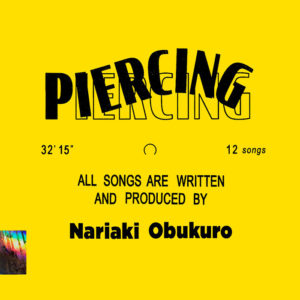
Don’t rush into making “The Best Albums Of 2019”, I’m here ♂️
— (@nariaki0296) November 18, 2019
Most year-end lists are ready to go by November 18, and everything that comes out after tends to be like a bonus. Even with this list, coming together in mid January 2020, something dropping on December 18 feels like its pushing it, especially at this point in ranking construction. Piercing, though, isn’t your normal rushed-out holiday offering. On last year’s Bunriha no Natsu, Nariaki Obukuro practically drew from a personal journal, loading songs up with the type of details about sipping tequila in front of Studio Alta and exploring far off climes that sound ripped from an Instagram feed. That debut was him digging into himself, Nariaki the only voice save for one platinum-level guest. Piercing touches the same intimacy, but rather than confessional, Obukuro aims for the abstract. Songs break apart into different acts — “Turn Back” moving from wispy guitar reflection to warped hip-hop, “Down The Line” teasing balladry before blowing open — while interludes pop up to either offer pallet cleansers (“Bye’s” chorus) or make for connectors that send ripples through what could be single songs (“Snug” into “Three Days Girl” being a particularly riveting link). Other voices abound, and almost feel like actors helping to make Obukuro’s world come alive, whether they offer chin-up pep (Kenn Igbi on “New Kids”) or a little extra existential jolt (5lack on “Gaia”). Tohji plays the role of swagged-out Puck on “Tohji’s Track,” which is just a whole song given over to him to do his thing.
Obukuro, though, remains the guiding force, and Piercing offers up as complete an artistic statement as one can hope from someone in the margins of J-pop. Frank Ocean remains the obvious inspiration, but songs here don’t sound like Channel Orange cribbings (no “Goodboy” in sight). Rather, they pulse and shuffle forward while Obukuro navigates thorugh them with a voice that goes from rapped lines to swaying lines revealing the emotional oomph within (and why Sony would roll the dice on this guy at all, even if he keeps throwing out curveballs). Maybe this is all the album equivalent of new car smell, but by the time Piercing reaches those faded piano keys opening up “Gaia,” I’m all in on this slightly bent bit of spiritual surrender. Check back in a few months, but this one feels like it will pass the test of time, and stand as one of the more ambitious J-pop projects in recent years. Listen below.
#4 Pasocom Music Club Night Flow
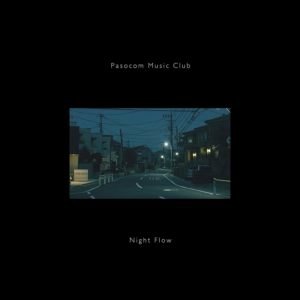
The craziest part of watching Pasocom Music Club go from desktop music creators uploading straight onto SoundCloud to duking it out against some J-pop big boys for a CD store trophy is learning how much depth these two have. A project that started out making sleek dance-pop riffing on elements of Japan’s musical past soon revealed itself to have some pop bonafides, clever twists on vaporwave and straight-up dancefloor bops. While nowhere near as prestigious as a CD shop award, Pasocom can now lay claim to a three year streak of landing in the Make Believe Melodies’ top 10, with every release offering a new wrinkle to their sound. Night Flow nudges the synth-pop of Dream Walk into the crowded streets of Shibuya and forces it to miss its last train home. Tracks opt for sparseness and a chilliness apt for anyone trying to find a good place to sit at 2 am while still retaining a certain excitement for what’s possible. “Air Waves” dashes ahead but always feels a little more mysterious than the duo’s brighter past (those electronic breezes whipping through probably go a long way to that feeling), while “Motion Of Sphere” slowly builds up towards no particular release, but rather a dance number gaining momentum through new developments. It’s all very nocturnal but never unsettling, and guest vocalists swing by to add welcome human warmth. Inoue Warabi is the MVP, adding sweetness to “Time To Renew” and nailing this middle between longing and anticipation on standout “Reiji No Machi.” With Night Flow, there’s no reason to worry about pop accessibility or ponder what city pop means in the Reiwa era, because this is their most well-crafted set to date, and that’s all they need. Listen below.
#3 Noah Thirty
What am I going/to do?
Noah had it all figured out. Her 2015 full-length Sivutie burrowed into itself to escape a world becoming rapidly noisier. Four-plus years on and countless developments that make those messy days seem downright inviting, everyone seeks some kind of escape when they aren’t opting to dive straight in to the now. It has been especially true when talking about Japanese music, which has seen older artists and rare releases from the Bubble days enjoy newfound life as many listeners outside the country (and, really, within it) seek escape to a time seen as far more pleasant. “An optimistic spirit buzzed through the music in neon-bathed, gauzy tableaus coated with groove-heavy strokes,” goes the description for one compilation, and few of those words apply to now.
Thirty turns to the past for inspiration, but doesn’t dwell there. Ayuko Kurasaki primary inspiration is the Tokyo of today, which also happens to hold plenty of the Tokyo of yesteryear and is constantly moving towards the Tokyo of tomorrow. It’s a in-flight magazine cliche that carries truth to it — Japan’s capital is a place that can, at least from the right angle, feel out of time. Thirty peers back, but rather than go for the obvious horn blurts and cruise-ready synths, Noah explores sonic ideas you’d find on Chee Shimizu’s record shelf. Songs here see how much motion they can wring out of the least sounds, with “18 Karat” and “Melting Blue” using space as a tool just as vital as the percussion or synth swirls wisping over them. “Xiangziji,” the album’s swiftest number, offers a slightly more guarded interpretation of city pop / “new music” songs about cities in the early evening flickering to life. There’s an excitement, but also the feeling of something already fading away (which perfectly describes Tokyo in 2020, where many landmarks of the ’80s are being replaced). This is nostalgia in motion, and a reminder that the past isn’t a place you can visit if you buy pricey re-issues, but rather an ever-present part of today that just happens to be growing smaller. Thirty, for all its complicated feelings and Dip In The Pool-isms, chooses to live in this moment, whatever it turns into. Get it here, or listen below.
#2 Fuji Chao Desert Dessert
In some ways, Desert Dessert broke this blog. It appeared a week before this site entered the barren period it now finds itself in, and loomed large over those few hours I had where I could actually try to get something up. Fuji Chao’s music has always been tough to figure out, mostly because few artists in Japan mainstream or underground like herself are pulling from such a personal place, of being young in modern Japan. Her songs are littered with small details that set them in a journal, while she’s often used samples of cartoons and TV shows to offer further emotional punch — along with just screaming and crying when needed. Desert Dessert builds on this and couples it with the best music she’s ever surrounded herself with. It seemed necessary to really try to do this one justice, at least in my mind. I’m still not sure how I can go about doing that.
Enough cop outs, let’s try. Fuji Chao expresses her world in only ways she can, and manages to leave a small creak in the door big enough for anyone to step in to listen to her tumble through these thoughts. Songs here are loaded with references to cat-shaped jewelry, meals at Chinese restaurants and, on “Bedtown No Uta,” practically offering an anti-tourism guide for suburban life (eating an ice cream cone from McDonald’s constitutes a win). Yet they also come clouded with heavier emotional wondering, both in terms of relationships and existential dread (opener “Robot” crams it all there over an unnerving shuffle). What’s new this time around, though, is the best backing music she’s conjured up yet, adding extra urgency and oomph to every number here. She tries out a sing-song delivery on the upbeat (but touch more philosophical than it lets on) “Occult Flower Shop,” and her skippy tone gets extra lift from those samples violin melodies breezing beneath. “Nothing Sad” and (especially) “Cream Puff Dream” use blown-out sound to transform hoppy dance-pop numbers into Candyland nightmares (and…note…this album can get pretty funny too. Sometimes when coping with the realities of existence, you gotta laugh at the little things). Other moments, like “Sex Motel,” sound like memories already fading away.
Make Believe Melodies is always going to have a soft spot for the bedroom artists creating sonic worlds wallpapered by emotional unease and sliced-up samples, who manage to capture a very specific situation in a way that can hit many more the same way. Desert Dessert is the best example of what Fuji Chao does, done with her best sonic choices in tow. I’m still not sure how to really capture how it connects, but it makes me want to keep going to figure out just how to do it. Get it here, or listen above.
#1 dj newtown West Members
Netlabels are dead. “Around 2010, I think the internet music scene really existed separate from the indie and major scenes,” Maltine Records foudner Tomad told me back in 2016. “But now, lots of artists become big from Soundcloud or Bandcamp. In a way, everything is internet music. It isn’t really special anymore.” That sounds quaint compared to 2019 (and whenever this blurb actually goes up), when subscription services gobble up all they can and musical trends move at the speed of TikTok. It’s not negative (though there are plenty of negatives) or positive (got that too)…just different, and maybe a little overwhelming. The web is everything, and music can feel like another digital fly trapped in it. The idea netlabels celebrated at the turn of the decade — of building an alternate world — feels antiquated now that the platform has become the center.
Talk about great timing for dj newtown to return. Eight years after last releasing new music, the project that arguably stands as Maltine Records first breakout creator returned with West Members, 11 tracks built around his breakbeat style born from 2chan and life in cookie-cutter suburbs. It could have just been a nice bit of nostalgia — and to a degree, it succeeds on this front too — but dj newtown’s newest offers something much more ambitious. It’s a look back, a dissection of existing work, a (very) brief history of J-pop in the 2010s, and a celebration of internet sound. Nothing better summed up 2019 in Japanese music…and no album had a better run of songs either, with each of these numbers elevating above thinkpiece bait and being real bangers.
West Members finds the dj newtown project slicing apart songs from another prominent netlabel act, tofubeats, and transforming the familiar into something new. There’s all kinds of layers here — I’ll point towards this special interview that tofubeats conducted with dj newtown, which not only features great details like this actually intended to come out in 2018 to celebrate 10 years of newtown, to a sorta glimpse into who has master rights of tofubeats’ catalog. And, of course, there’s the whole identity thing, which gets addressed right away with a not-so-serious line about blog posts being “fake news” if they say tofubeats and dj newtown are the same person (who can relate).
Let’s just not even worry about parsing out that, because you don’t really need it. This is the avatar for the early netlabel ecosystem drilling into the song catalog of the first netlabel act to crossover to mainstream J-pop, where he’s still locked in today. And from familiar tofubeats songs, dj newtown finds completely fresh angles on them that reveal all kinds of depth. “Fumetsu No Kokoro” transforms from a fizzy drama opening theme to the haywire “IMM (FUM),” where voices malfunction into delirious new melodies. “What You Got” becomes a slow burn as “WHA” while “Yuuki” from Fantasy Club turns into pitched-up mist as “YUU.” That West Members covers the entire history of tofubeats — and, maybe accidentally, J-pop in the 2010s — and reveals the malleability of his work is a bonus. You get returns to pre-Warner releases like “Touch” and “So What” (that one offering the best departure with “SOW,” breaking idol-adjacent pep down into some molecular-level fanfaire), and then that time Dream Ami stumbled into his zone (“POS” turning “Positive” into a nice skittery dash) before reaching an artist happy to put himself in the spotlight (watch post-truth dread turn into house escapism on “SHO”).
Few artists J-pop or underground can boast a catalog of songs in the 2010s as durable as what tofubeats cooked up, and what West Members reveals is he’s also a pro at moments begging to be revisited over and over again. This is dj newtown’s strong point — they find a few great seconds or an irresistible bit of Auto-tuned sing-rap, and transform that into a jam all its own — and here they pinpoint the hookiest instanes from Yusuke Kawai’s works. Those can be syllabic yelps, half-second horn blurts, keyboard workouts, or so much more. The little minute-long interludes have more fun playing around with familiar sounds than some Oricon-top-eyeing singles ever do. If you just drop into this one sans context, you’ll still have a good time, because it’s built by somebody with a knack for transforming single details into big tunes, working from among Japan’s best collections of songs.
Thing is, it’s also the perfect collection to celebrate the 2010s as they fully zoom into the background. Turns out missing that 2018 goal and letting this transform into an awkward “11th anniversary” release was fitting, because so much Japanese music now sounds indebted to the netlabel community dj newtown and tofubeats represent. I’d reckon at least 90 percent of the artists on this list owe some influence to one of those acts or a bigger constellation like Maltine — whether they actually released on a netlabel or drew sonic inspiration directly from tofubeats (Pasocom Music Club, Native Rapper, Mom, Yunovation, plenty more). Yet that also applies to how artists use the internet in Japan today, whether it’s Fuji Chao turning a Bandcamp page into her own alternate world or a major-label act like Nariaki Obukuro surprise releasing a genre-skipping album free of the usual J-pop concerns.
Netlabels are dead, but netlabels are also everywhere as the ’20s start, both represented by the artists making moves on all levels of the Japanese music industry or the ethos of creator-centric art starting to become the norm. I’ve already written about this over at The Japan Times, with a focus on Vocaloid, but it’s true of Maltine Records and the dozens of other netlabels abounding at the start of the 2010s. A wave of young artists who grew up with the internet are now creating their own music, and often doing the bulk of it by themselves, able to retain their vision. Nothings perfect and plenty of negative forces present hurdles — familiar biz hangups, the unease of lending so much power to tech-first platforms, a little thing called capitalism — but right now, this web-born attitude to creation has made me feel genuinely optimistic about where the country’s music communities are heading.
West Members packs all of those good feelings about the possibilities of the internet and music into one place. Part of it is revelery for what was — the .zip files, the browswer-crashing special sites, the parties that reminded that this URL world moved into IRL (and still does!) with all the sense of community intact, the sweat-drenched interview I did after a Pa’s Lam System show at one such gathering. Yet it’s also built from the creativity, remix-minded culture and general fun that continues to permeate out of it, and makes looking forward actually kind of exciting. Between them, dj newtown and tofubeats helped build this, and remain every bit as plugged in and on top of it today. Get it here, or listen below.

